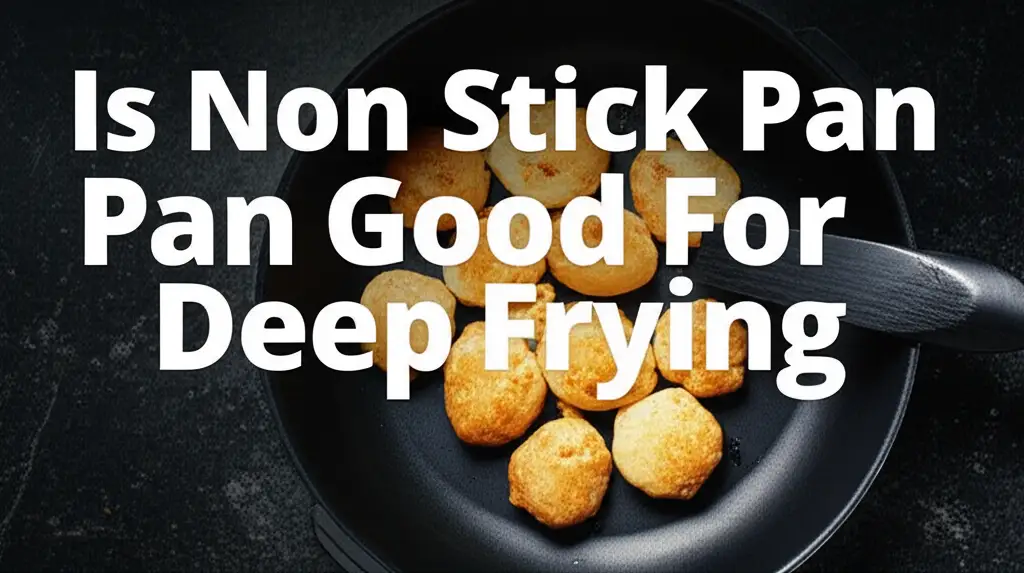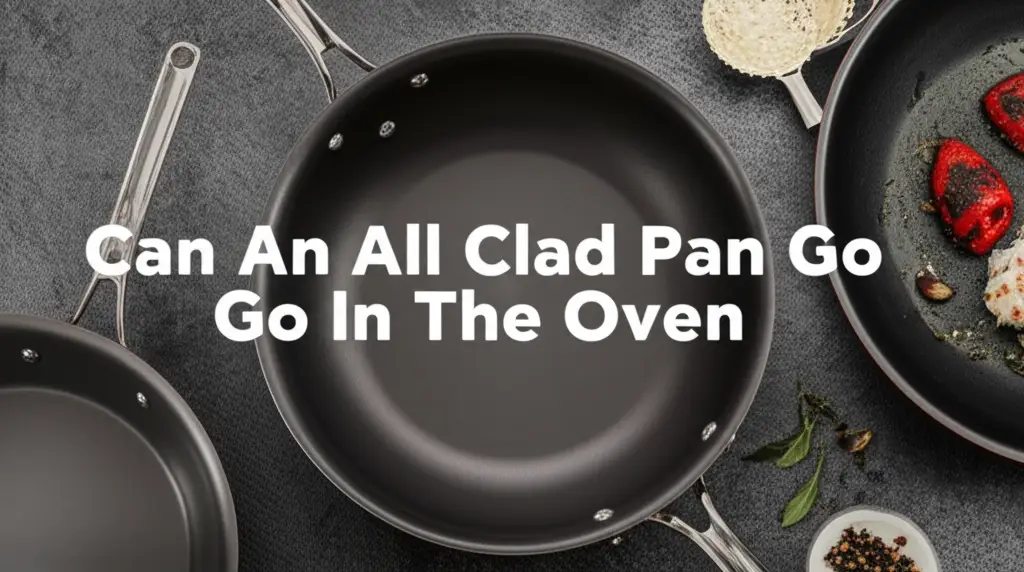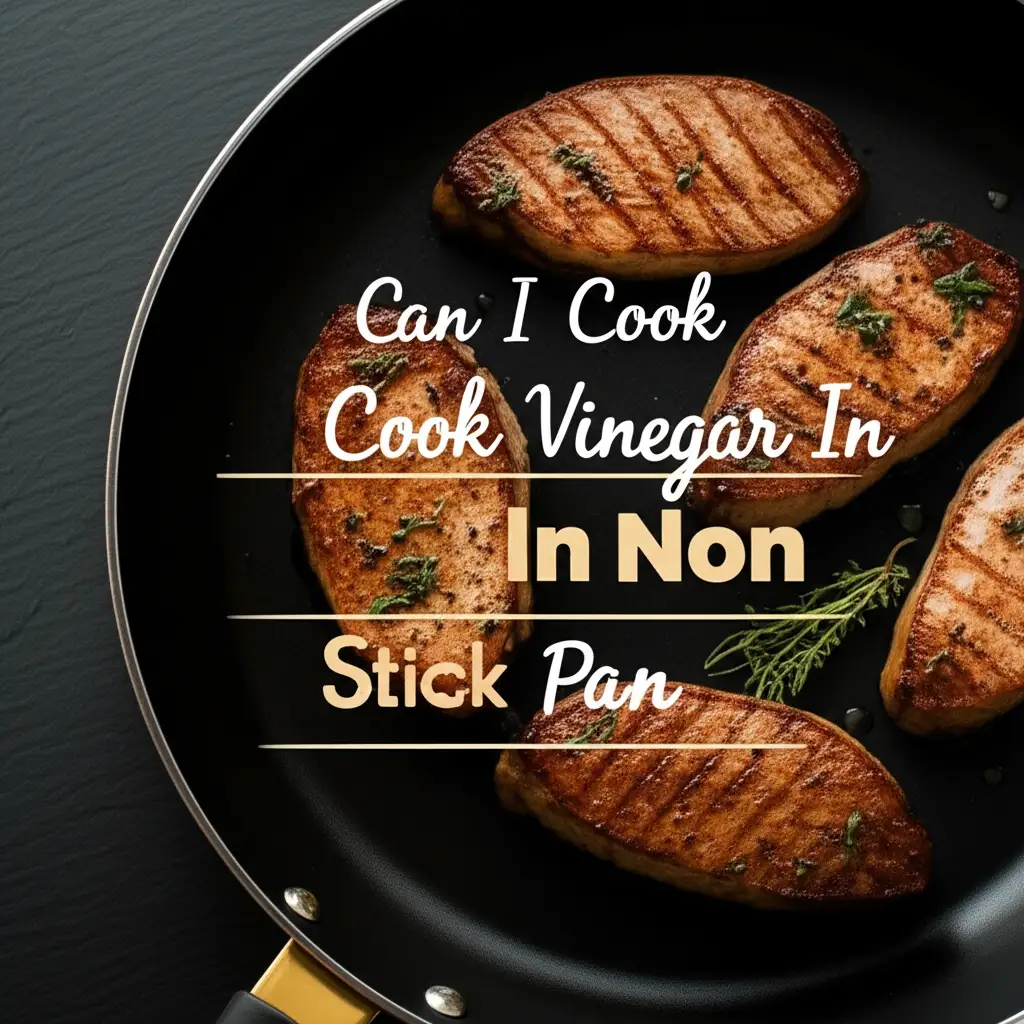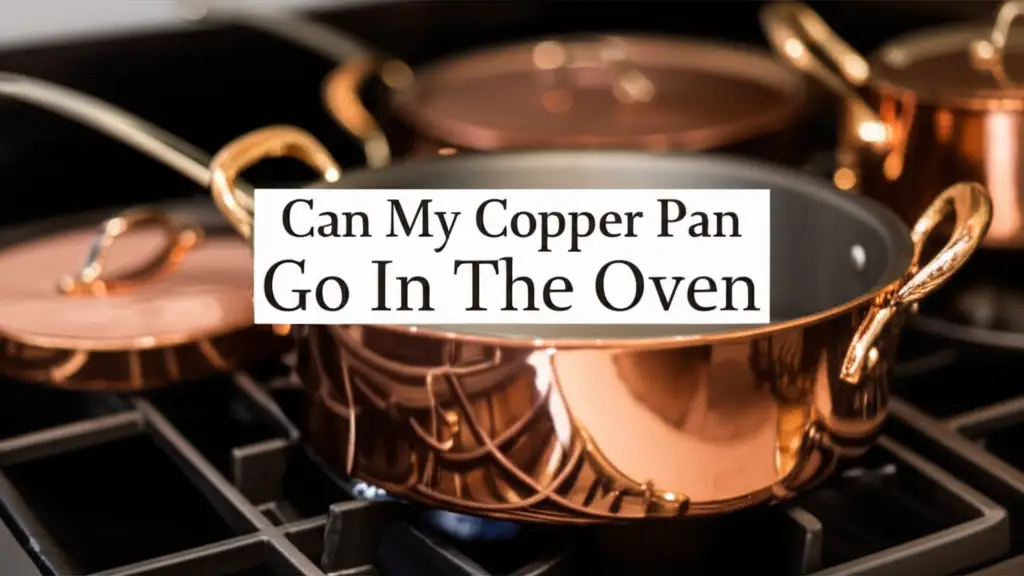· Katria Melrose · Kitchenware · 15 min read
Can I Put Non Stick Pan In Oven
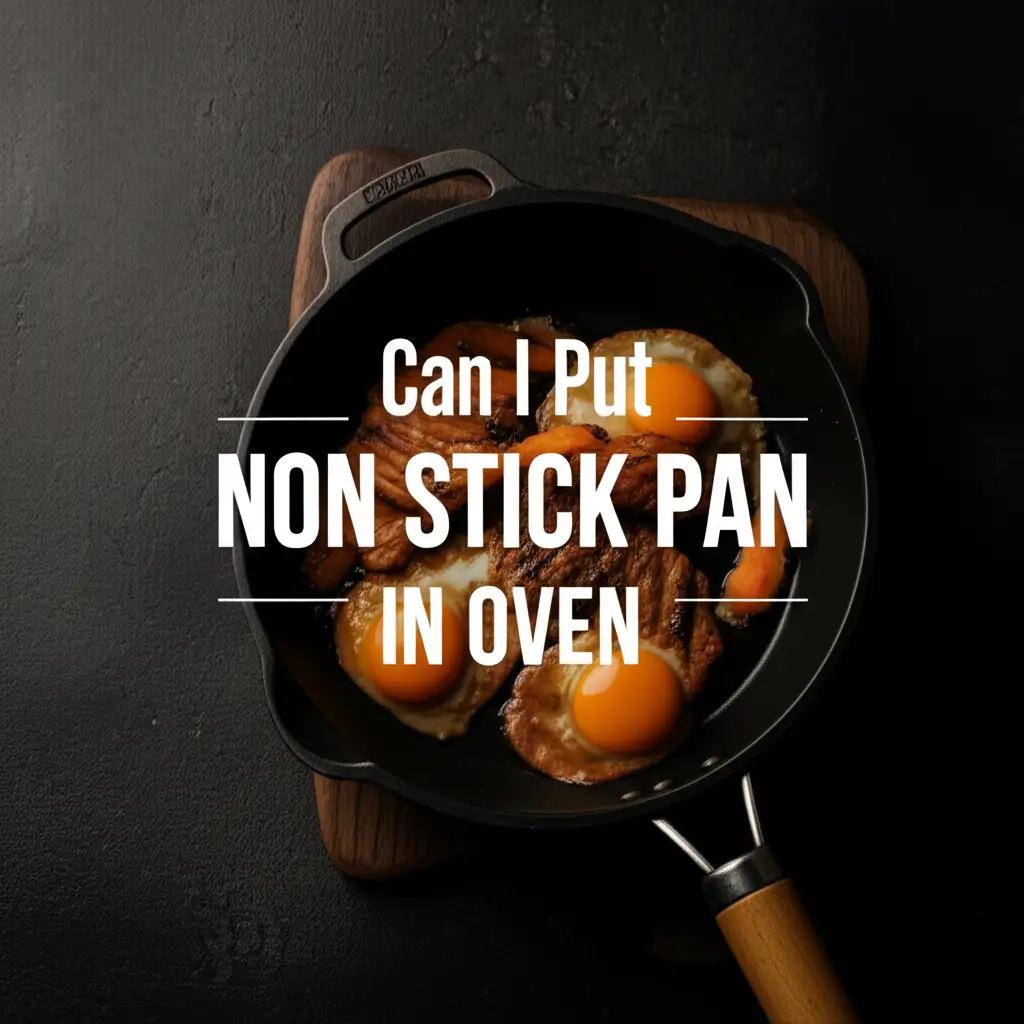
Can You Put Your Non-Stick Pan in the Oven Safely?
Have you ever wondered if your favorite non-stick pan can handle the heat of the oven? It’s a common question for home cooks. We often use these pans for stovetop cooking, but what about baking or finishing a dish in the oven? Using cookware in the wrong way can damage it or even create safety concerns. I want to help you understand the facts about putting your non-stick pan in the oven. We will explore temperature limits, material differences, and the best ways to keep your kitchen safe. You will learn how to identify oven-safe non-stick pans. You will also discover important tips for proper use.
Takeaway
- Check Manufacturer Guidelines: Always look for “oven-safe” markings or read the pan’s instructions for specific temperature limits.
- Know Your Materials: Different non-stick coatings and handle materials have varying heat tolerances.
- Avoid Overheating: Exceeding recommended temperatures can release harmful fumes and damage the pan’s coating.
- Prioritize Safety: Use oven mitts and ensure proper ventilation when using non-stick pans in the oven.
Yes, you can often put a non-stick pan in the oven, but only if it is specifically labeled as oven-safe by the manufacturer. Each pan has a maximum temperature limit it can withstand without damage or releasing harmful substances. Always check the pan’s base or instructions for this crucial information.
Understanding Non-Stick Pan Oven Safety: The Basics
Many people ask if their non-stick pan is suitable for oven use. The simple answer is: it depends on the pan. Not all non-stick pans are designed for the high temperatures of an oven. It is important to know the specific limits of your cookware. Ignoring these limits can damage your pan. It can also pose health risks.
Non-stick pans typically have a base material like aluminum or stainless steel. They also feature a non-stick coating on the cooking surface. Handles and lids are other key components. Each of these parts has a different heat tolerance. For instance, metal handles are generally oven-safe. Plastic or rubber handles usually are not. They will melt or degrade in the oven.
The non-stick coating itself is a major factor. Most traditional non-stick coatings are made from PTFE (polytetrafluoroethylene), commonly known by the brand name Teflon. While very durable for stovetop use, PTFE can begin to break down at high temperatures. Newer non-stick pans may use ceramic-based coatings. These often tolerate higher oven temperatures. Always check the pan’s packaging or the manufacturer’s website. They will tell you if the pan is oven-safe and up to what temperature. This simple step can save your pan and keep your kitchen safe.
Decoding Temperature Limits: What Your Non-Stick Pan Can Handle
Knowing your pan’s temperature limits is very important. Non-stick coatings are heat sensitive. Different types of non-stick pans can handle different levels of heat. Understanding these limits helps you use your cookware correctly. It also helps you avoid damage.
Most traditional PTFE-coated non-stick pans are safe up to 350°F to 500°F (175°C to 260°C). The exact limit depends on the specific brand and pan construction. For example, some may only be safe up to 350°F if they have a certain type of handle. Others might reach 400°F or 450°F. Beyond these temperatures, the coating can degrade. This degradation releases fumes that are harmful. These fumes can also ruin the pan’s non-stick properties.
Ceramic non-stick coatings often have higher oven temperature limits. Many ceramic pans are safe up to 500°F to 600°F (260°C to 315°C). Some can even go higher. These coatings are more resilient to high heat. They do not release harmful fumes when overheated in the same way as PTFE. Even with ceramic pans, you must check the manufacturer’s instructions. Handle materials can still limit the oven-safe temperature. For instance, a ceramic pan with silicone handles might have a lower overall oven limit than one with all-metal handles. Always look for clear markings on the pan or its packaging that state “oven-safe” and list the maximum temperature.
The Dangers of Overheating Non-Stick Pans
Overheating a non-stick pan can lead to several problems. These issues range from damaging your cookware to posing health risks. It is crucial to respect the stated temperature limits. Going beyond these limits has real consequences.
The most common non-stick coating, PTFE, can start to break down when heated above 500°F (260°C). When this happens, it releases ultra-fine particles and various gases. These gases can cause flu-like symptoms in humans, often called “Teflon flu” or polymer fume fever. Symptoms include chills, fever, headache, and body aches. They usually pass within 24 to 48 hours. However, these fumes are especially dangerous for birds. They can be fatal to birds very quickly. Even at lower temperatures, if a pan is left empty on high heat, it can reach dangerous temperatures rapidly. This is why you should not use a non-stick pan for very high-heat cooking. You should also never preheat an empty non-stick pan on high.
Beyond health concerns, overheating also destroys the non-stick properties of your pan. The coating will break down. It will then become sticky. This ruins the pan’s main purpose. You will find food sticking. This makes the pan harder to clean. It also makes it less effective for cooking. Once a non-stick coating is damaged by excessive heat, it cannot be repaired. The pan will need to be replaced. Proper heat management is vital for the safety of your family and the longevity of your cookware. If you accidentally burn your pan, you can learn how to clean a burnt non-stick pan. Understanding these risks can also help you decide why you should not use non-stick pan for certain tasks.
Identifying Oven-Safe Non-Stick Cookware: A Practical Guide
Determining if your non-stick pan is oven-safe requires a bit of detective work. It’s not always obvious just by looking at it. Following a few simple steps will help you make the right decision. This protects your pan and ensures safe cooking.
First, check the bottom of the pan or its handle. Many manufacturers print oven-safe temperatures or symbols directly on the cookware. Look for phrases like “oven-safe to 400°F” or an oven symbol. If you do not see anything there, check the original packaging or instruction manual. This is the most reliable source of information. Manufacturers clearly state the pan’s limits here. If you no longer have the packaging, visit the manufacturer’s website. Search for your specific pan model. They often have product specifications available online.
Next, consider the materials your pan is made from. The type of handle is a big clue.
- Metal handles (stainless steel, cast iron): These are usually oven-safe to very high temperatures, sometimes even up to 600°F (315°C) or higher.
- Silicone handles: These are generally oven-safe but have lower limits, typically around 350°F to 400°F (175°C to 200°C).
- Plastic or Bakelite handles: These are almost never oven-safe. They will melt or deform at oven temperatures. Avoid putting pans with these handles in the oven.
- Glass lids: While the pan itself might be oven-safe, ensure the lid is also oven-safe. Many glass lids have plastic or metal knobs that might not withstand high heat. If you are unsure, it is always best to err on the side of caution. Do not use the pan in the oven if you cannot confirm its oven-safe rating. It is better to use a different pan than to risk damaging your non-stick coating or creating a safety issue. You can also figure out how to know if your non-stick pan is bad if it shows signs of wear.
Best Practices for Oven Cooking with Non-Stick Pans
Using your non-stick pan in the oven requires careful handling. Following best practices ensures safety and helps extend the life of your cookware. Treat your pan well, and it will serve you for a long time.
Here are some essential tips for using non-stick pans in the oven:
- Verify Oven Safety First: Reconfirm your pan’s specific temperature limit before each use. This prevents accidental overheating. Even if you think you remember, a quick check can prevent mistakes.
- Preheat the Oven, Not the Pan: Always preheat your oven to the desired temperature first. Place the non-stick pan with food inside the preheated oven. Never preheat an empty non-stick pan in the oven or on the stovetop. Empty pans can reach dangerous temperatures very quickly.
- Use Lower Temperatures: If possible, stick to the lower end of your pan’s oven-safe temperature range. This reduces stress on the non-stick coating. It helps prevent accidental overheating if your oven temperature is slightly off.
- Protect Handles and Lids: If your pan has silicone handles or a glass lid with a knob, ensure these components are also oven-safe to your desired temperature. Use oven mitts when removing the pan from the oven. Handles will be extremely hot.
- Ensure Good Ventilation: When cooking at higher temperatures, turn on your kitchen fan. This helps to remove any potential fumes, especially if you are using a PTFE-coated pan.
- Avoid Broiling: Broiling often involves very high, direct heat, sometimes exceeding 500°F (260°C). This can be too extreme for most non-stick coatings. Unless your pan is specifically rated for broiling, avoid this cooking method.
By following these guidelines, you can safely use your non-stick pan for various oven-based dishes. You will protect your health and keep your pan in good condition.
When Not to Use Your Non-Stick Pan in the Oven (and Alternatives)
There are specific situations where you should avoid putting your non-stick pan in the oven. Knowing these instances helps prevent damage and ensures safety. Sometimes, a different piece of cookware is simply a better choice for the job.
Do not put your non-stick pan in the oven if:
- It has plastic, rubber, or wooden handles. These materials will melt, crack, or burn at oven temperatures. They can release unpleasant odors or even toxic fumes.
- The manufacturer’s instructions state it is not oven-safe, or you cannot find any oven-safe rating. Guessing can lead to pan damage or safety hazards. If in doubt, do not risk it.
- You plan to exceed the pan’s stated temperature limit. Even by a small margin, going over the limit can cause the non-stick coating to break down.
- You intend to use the broiler. Broilers expose cookware to very high, direct heat. Most non-stick pans cannot withstand this intensity. The coating will quickly degrade.
- The pan shows significant damage. If the non-stick coating is scratched, peeling, or bubbling, it is already compromised. Heating it further in the oven could worsen the damage. It could also increase fume release.
If your non-stick pan is not oven-safe, or if the cooking task requires very high heat, consider these alternatives:
- Cast Iron Skillets: These are excellent for oven use. They can withstand extremely high temperatures. They transition well from stovetop to oven.
- Stainless Steel Pans: Many stainless steel pans with all-metal handles are oven-safe. They are durable and versatile.
- Oven-Safe Bakeware: Glass baking dishes, ceramic dishes, and metal baking pans are designed specifically for oven use. They are ideal for casseroles, roasts, and baked goods.
- Enamel-Coated Cast Iron: Dutch ovens and braisers are perfect for slow cooking in the oven. They provide even heat distribution.
Choosing the right cookware for the job is important. It helps ensure the best cooking results and the longevity of your kitchen tools.
Extending the Life of Your Non-Stick Pan After Oven Use
Proper care after using your non-stick pan in the oven is vital. This helps maintain its non-stick properties and extends its lifespan. Neglecting post-oven care can lead to premature wear and tear.
First, always allow the pan to cool completely before washing it. Submerging a hot non-stick pan in cold water can cause thermal shock. This can warp the pan. It can also damage the non-stick coating. A warped pan will not sit flat on the stovetop. This leads to uneven heating. Once the pan is cool, wash it gently. Use warm, soapy water and a soft sponge or cloth. Avoid abrasive scrubbers, steel wool, or harsh detergents. These can scratch or degrade the non-stick surface.
Do not use a dishwasher for your non-stick pan. Many non-stick pans are labeled “dishwasher safe,” but the harsh detergents and high heat in a dishwasher can shorten the life of the coating. Hand washing is always the best method for non-stick cookware. You can find more tips on can you wash non-stick pan in dishwasher. After washing, dry the pan thoroughly to prevent water spots. Store your non-stick pan carefully. Avoid stacking it with other metal pans without protection. Use pan protectors or paper towels between pans to prevent scratches.
Regular seasoning (for some types of non-stick, check manufacturer instructions) or a light wipe with cooking oil can also help maintain the surface. If you see food starting to stick after some use, especially after high-heat cooking, it might be a sign of wear. Proper cleaning, such as how to clean non-stick pan before first use, and ongoing gentle care are key to making your non-stick pans last.
Common Mistakes to Avoid with Non-Stick Pans in the Oven
Even with good intentions, people sometimes make mistakes that harm their non-stick pans when using them in the oven. Knowing these common errors can help you avoid them. This preserves your pan’s integrity and ensures your safety.
One frequent mistake is ignoring temperature limits. People assume all non-stick pans are alike. They put them in an oven set to 450°F (232°C) or higher without checking. This quickly damages most traditional PTFE coatings. Always verify the specific oven-safe temperature for your pan. Another error is using pans with non-oven-safe handles. Plastic or silicone handles, while comfortable on the stovetop, will often melt or deform in the oven. This creates a mess and can release unpleasant odors. Always check the handle material and its heat resistance.
Preheating an empty non-stick pan in the oven is also a common and dangerous mistake. Just like on a stovetop, an empty pan can overheat extremely fast in an oven. This causes the coating to break down rapidly. Always place food in the pan before putting it into a preheated oven. Using metal utensils while the pan is in the oven is another error. While less common in oven use than stovetop, any scratching of the hot non-stick surface can worsen damage. Stick to silicone, wood, or plastic utensils.
Finally, not providing proper ventilation is a mistake, especially with PTFE pans at higher temperatures. Even within safe limits, some fumes can be present. Running a range hood fan helps clear the air. By avoiding these common pitfalls, you will keep your non-stick pans safe and effective for longer. You will also protect your kitchen environment.
FAQ Section
What temperature can a non-stick pan go in the oven?
Most traditional non-stick pans with PTFE coatings are oven-safe up to 350°F to 450°F (175°C to 232°C). Ceramic non-stick pans often tolerate higher temperatures, reaching 500°F to 600°F (260°C to 315°C). Always check the manufacturer’s specific instructions for your pan model. Handle materials also impact the maximum oven temperature.
How do I know if my pan is oven-safe?
Look for “oven-safe” markings or symbols on the bottom of the pan or its handle. Check the original packaging or the manufacturer’s website for detailed specifications and temperature limits. Examine the handle material: metal handles are usually oven-safe, while plastic or rubber handles are generally not.
Can all non-stick pans go in the oven?
No, not all non-stick pans are designed for oven use. Pans with plastic, rubber, or wooden handles are typically not oven-safe as these materials will melt or degrade. Only use non-stick pans in the oven if they are explicitly labeled as oven-safe by the manufacturer.
Are non-stick pans with plastic handles oven-safe?
Generally, no. Non-stick pans with plastic or Bakelite handles are not oven-safe. These materials cannot withstand oven temperatures and will melt, warp, or crack. Always check the specific heat resistance of the handle material. Look for pans with metal or high-heat silicone handles for oven use.
What happens if I put a non-stick pan in an oven that’s too hot?
If a non-stick pan is put in an oven that is too hot (above its temperature limit), the coating can break down. This can release harmful fumes, especially from PTFE-coated pans, which can cause flu-like symptoms. The non-stick surface will also be permanently damaged, losing its non-stick properties and becoming prone to sticking.
Can I bake a cake in a non-stick frying pan?
You can bake a cake in an oven-safe non-stick frying pan, provided the pan’s oven temperature limit is sufficient for your cake recipe. Ensure the pan is deep enough and has oven-safe handles. However, traditional cake pans or springform pans are usually better suited for baking due to their shape and even heat distribution.
Conclusion
Putting your non-stick pan in the oven is often possible, but it requires careful attention to detail. It is not a one-size-fits-all answer. We have explored the critical factors, from understanding temperature limits and material differences to recognizing the dangers of overheating. My goal was to provide you with clear, practical advice. You now know how to check if your specific non-stick pan is oven-safe. You also have the best practices for using it safely.
Remember, always consult your pan’s manufacturer instructions. Prioritize safety by checking handle materials and respecting temperature limits. By following these guidelines, you can confidently use your non-stick pan in the oven for a wider range of recipes. This extends its life and ensures enjoyable cooking experiences. Now, go confidently create your next delicious meal!


